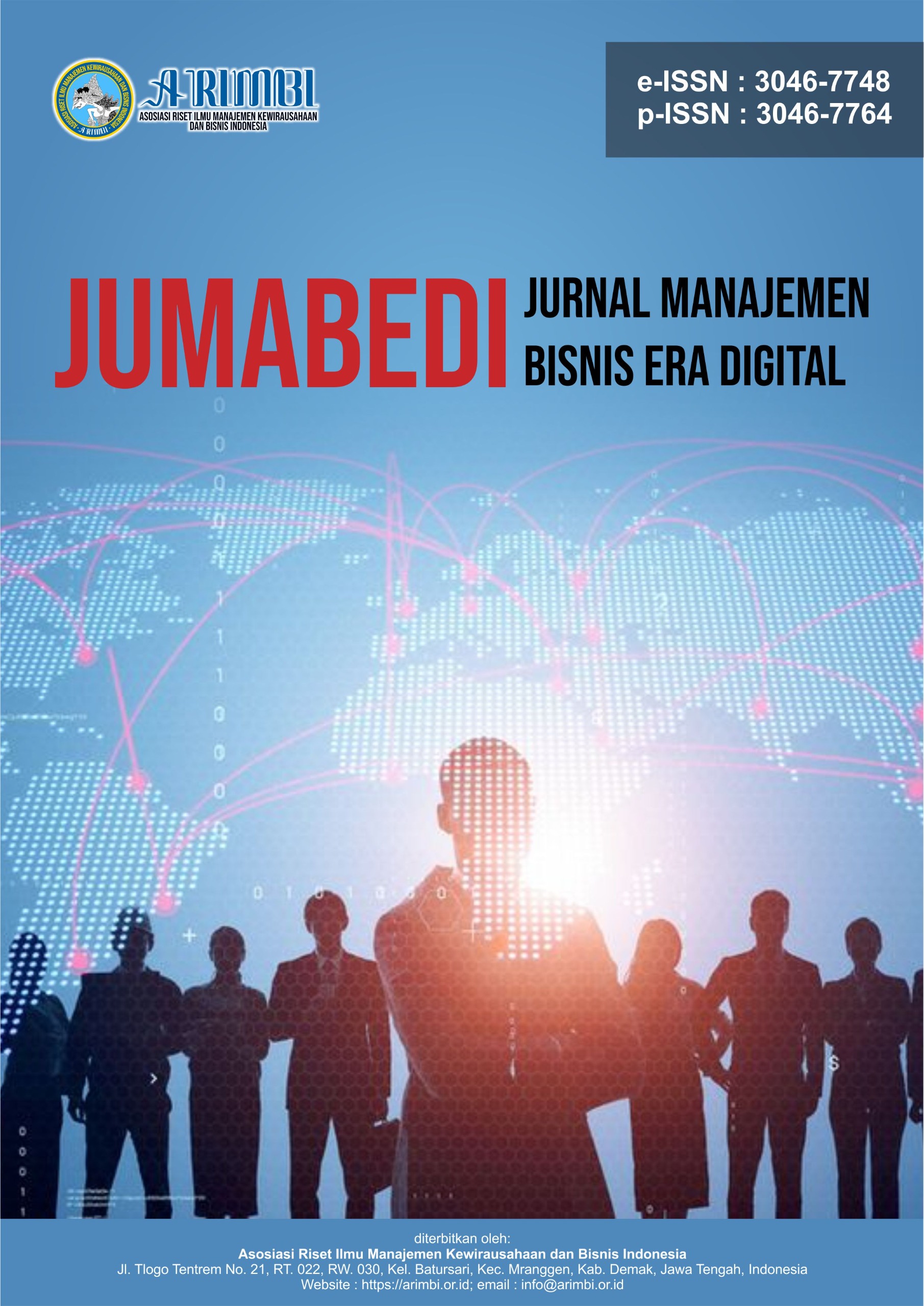Peran Program BPNT dalam Meningkatkan Financial Well-Being dan Family Finance Keluarga Penerima di Kota Malang
DOI:
https://doi.org/10.61132/jumabedi.v2i3.668Keywords:
BPNT Program, Family Finance, Financial Literac, Financial Well-Being, Social AssistanceAbstract
The study stems from the significance of social aid as a tool for empowering low-income households. The Non-Cash Food Assistance (BPNT) program is designed not only to fullfill basic needs but also to support long-term improvements in family financial well-being. The study aims t explore how financial well-being and family finance are interpreted by both beneficiaries and government actors in Malang City. Employing a qualitative method with single-case study design,data were collected through in-depth interviews, direct observation, and document analysis. Finding reveal that financial well-being is perceived as a state of economic stability, demonstrated by the ability to meet essential needs, manage debt, and plan finances effectively. Meanwhile, family finance is expressed through disciplined budgeting, saving habits, and the implementation of financial literacy within the houshold. The study underscores that the success of social assistance program such as BPNT is largely dependent on beneficiaries’ financial management skills rathet than the nominal value of the aid.
Downloads
References
Brüggen, E. C., Hogreve, J., Holmlund, M., Kabadayi, S., & Löfgren, M. (2017). Financial well-being: A conceptualization and research agenda. Journal of Business Research, 79, 228–237. https://doi.org/10.1016/j.jbusres.2017.03.013
Bureau, C. F. P. (2015). CFPB Financial Well-Being Scale.
Cox, A. G., & Joo, S. (2002). Personal financial wellness. In J. J. Xiao (Ed.), Handbook of consumer finance research (pp. 21–33). Springer. https://doi.org/10.1007/978-0-387-75734-6_2
Dini, A. R., Nurmalisa, Y., & Halim, A. (2018). Efektivitas pelaksanaan program Bantuan Pangan Non Tunai (BPNT) di Kelurahan Gulak Galik. Jurnal Kultur Demokrasi, 5(13), 1–12. https://jips.fkip.unila.ac.id/index.php/JKD/article/view/17837/12721
Fazli Sabri, M., Cook, C. C., & Gudmunson, C. G. (2012). Financial well‐being of Malaysian college students. Asian Education and Development Studies, 1(2), 153–170. https://doi.org/10.1108/20463161211240124
Fox, J., Bartholomae, S., & Lee, J. (2005). Building the case for financial education. The Journal of Consumer Affairs, 39(1), 195–214. http://www.jstor.org/stable/23860132
Garman, E. T., & Forgue, R. E. (2011). Personal finance. Cengage Learning.
Hanum, S. (2019). Efektivitas pelaksanaan program Bantuan Pangan Non-Tunai (BPNT) dalam pengentasan kemiskinan di Kecamatan Medan Johor [Undergraduate thesis, Universitas Sumatera Utara]. Repository Universitas Sumatera Utara.
Huston, S. J. (2009). Measuring financial literacy. Journal of Consumer Affairs, 44(2). https://doi.org/10.2139/ssrn.1945216
Lincoln, Y. S., Guba, E. G., & Pilotta, J. J. (1985). Naturalistic inquiry. International Journal of Intercultural Relations, 9(4), 438–439. https://doi.org/10.1016/0147-1767(85)90062-8
Mahdzan, N. S., & Tabiani, S. (2013). The impact of financial literacy on individual saving: An exploratory study in the Malaysian context. Transformations in Business and Economics, 12(1), 41–55.
Noctor, M., Stoney, S., & Stradling, R. (1992). Financial literacy: A discussion of concepts and competences of financial literacy and opportunities for its instruction into young people’s learning. NFER Report for the National Westminster Bank.
Robb, C. A., & Woodyard, A. S. (2011). Financial knowledge and best practice behavior. Association for Financial Counseling and Planning Education, 22(1), 36–46.
Sherraden, M. (1991). Assets and the poor: A new American welfare policy. M.E. Sharpe.
Tiara, R., & Mardianto. (2019). Efektivitas program Bantuan Pangan Non Tunai (BPNT) di Kota Palembang. Demography Journal of Sriwijaya (DeJos), 3(1), 37–46.
Vitt, L. A., Anderson, C., Kent, J., Lyter, D. M., Siegenthaler, J. K., & Ward, J. (2000). Personal finance and the rush to competence: Financial literacy education in the U.S. Institute for Socio-Financial Studies. https://doi.org/10.1111/j.1745-6606.2005.00009.x
Xiao, J. J. (2008). Applying behavior theories to financial behavior. In J. J. Xiao (Ed.), Handbook of consumer finance research (pp. 69–81). Springer. https://doi.org/10.1007/978-0-387-75734-6_5
Yin, R. K. (2018). Case study research and applications: Design and methods (6th ed.). Sage.
Downloads
Published
Issue
Section
License
Copyright (c) 2025 Jurnal Manajemen Bisnis Era Digital

This work is licensed under a Creative Commons Attribution-ShareAlike 4.0 International License.





